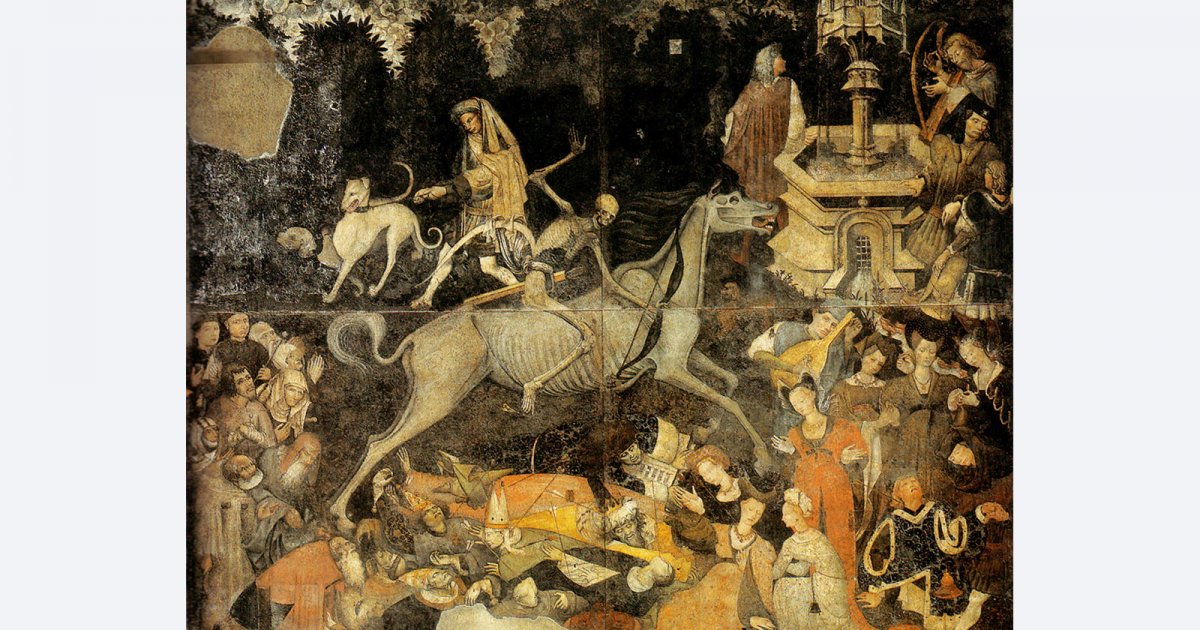PALAZZO ABATELLIS AND REGIONAL GALLERY OF SICILY, Triumph Of Death
 Language: English / USA
Language: English / USA
The large fresco depicts the grim subject of the Triumph of Death, a very common theme in the Middle Ages when there were no cures for the numerous outbreaks of plague.
The fresco was painted around 1450 in the courtyard of Palazzo Sclafani, which was being used as a hospital at the time. In 1944, after the building was bombed, it was removed from the wall it was painted on, and was clumsily cut into four parts, with the unfortunate results you can see today. The author was undoubtedly a painter of outstanding ability, but despite extensive research, his identity remains a mystery.
In the center of the fresco, Death is depicted as a skeleton on horseback, with strips of flesh falling away, galloping wildly over a heap of people he has already killed, belonging to the upper echelons of society at the time: if you look closely at the clothing of the dead, you’ll see they include bishops, a pope, an emperor, a sultan and a man of the law. This indicates the death spares no-one, however rich or powerful. The skeleton is holding a bow from which arrows are piercing men and women as they go about their favorite pastimes in a magnificent garden, amid song, hunting and carefree activities.
The most memorable element in the fresco is the horse, depicted with a flowing mane as the terrible, fearsome instrument of an ineluctable fate, painted in a style that would not have displeased Pablo Picasso, who claimed to have taken inspiration from this work for his painting Guernica. This tremendous scene features a wealth of cruel, harrowing details, yet at the same time appears suspended in a delicate, timeless, fairytale dimension.
Note how cruelly the grim knight haughtily ignores the poor, the sick and the crippled, who are vainly invoking death as a liberation from their ills: a sort of macabre consolation for the suffering.
An interesting fact: if you’re wondering what the artist looked like, he painted himself, brush in hand, next to an assistant. Look for the two figures at the top of the desperate group on the left, and you’ll see him looking in your direction.



